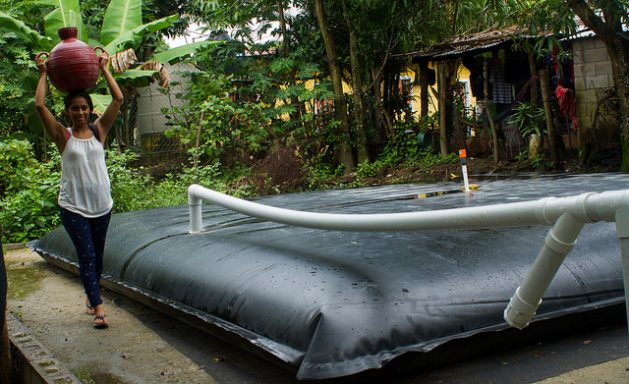- Rainwater harvesting provides a source of water at the point where it is needed. It is owner operated and managed.
- It provides an essential reserve in times of emergency and/or breakdown of public water supply systems, particularly during natural disasters.
- The construction of a rooftop rainwater catchment system is simple, and local people can easily be trained to build one, minimizing its cost.
- The technology is flexible. The systems can be built to meet almost any requirements. Poor households can start with a single small tank and add more when they can afford them.
- It can improve the engineering of building foundations when cisterns are built as part of the substructure of the buildings, as in the case of mandatory cisterns.
- The physical and chemical properties of rainwater may be superior to those of groundwater or surface waters that may have been subjected to pollution, sometimes from unknown sources.
- Running costs are low.
- Construction, operation, and maintenance are not labor-intensive.
- The success of rainfall harvesting depends upon the frequency and amount of rainfall; therefore, it is not a dependable water source in times of dry weather or prolonged drought.
- Low storage capacities will limit rainwater harvesting so that the system may not be able to provide water in a low rainfall period. Increased storage capacities add to construction and operating costs and may make the technology economically unfeasible, unless it is subsidized by government.
- Leakage from cisterns can cause the deterioration of load bearing slopes.
- Cisterns and storage tanks can be unsafe for small children if proper access protection is not provided.
- Possible contamination of water may result from animal wastes and vegetable matter.
- Where treatment of the water prior to potable use is infrequent, due to a lack of adequate resources or knowledge, health risks may result; further, cisterns can be a breeding ground for mosquitoes.
- Rainfall harvesting systems increase construction costs and may have an adverse effect on home ownership. Systems may add 30% to 40% to the cost of a building.
- Rainfall harvesting systems may reduce revenues to public utilities.
You can read other posts on the El Salvador Perspectives blog here.


